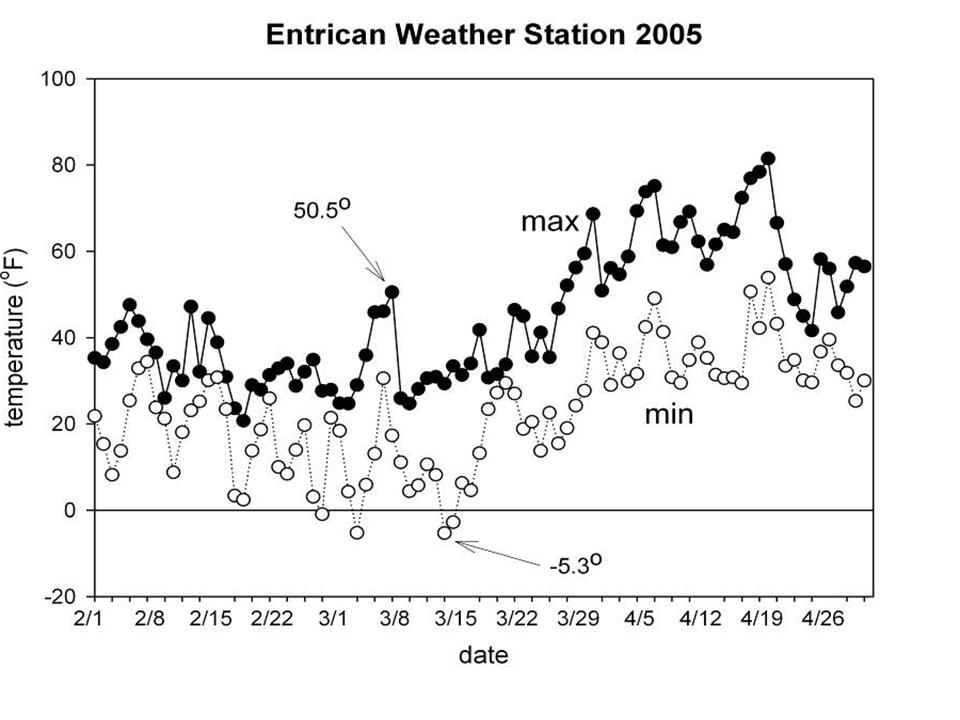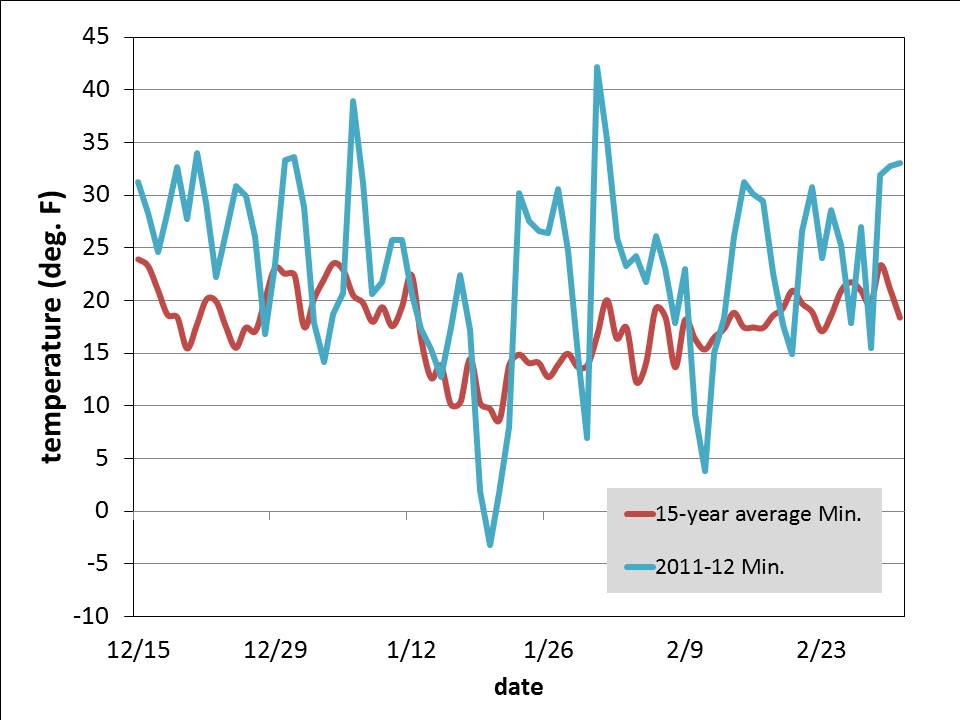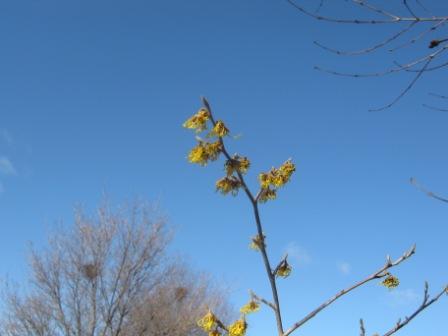Despite Linda’s assertion to the contrary, I was not cow-tipping nor was I sampling micro-brews last week when I missed my regular post. As usual, the beginning of spring is a busy time on the research side of my appointment. This past week we began setting up for a major new project. The goal of our newest study is to look at physiological traits of street trees that may enable them to better withstand future climate change.
If you think about it, trees that are planted today may experience future climates in their lifetimes that will be different than the climates under which they were selected. So how do we ensure that trees that are planted today can withstand a potentially different environment in 50 or 75 years? It’s a very complex question. An easy response would be to plant species or seed sources that have evolved in warmer, southern locations. The problem is climate change is predicted to occur gradually so southern trees moved northward today will be subject to increased frost and freeze damage in the interim.

Grad student Dana Ellison (L) and undergrad research aide Aniko Gaal (R) pot up shade tree liners for a new project.
Another approach, and the one we are investigating, is that trees that are best suited for the future may be those that have a high degree of phenotypic plasticity. What is phenotypic plasticity? Simply stated is the relative ability of a species or genotype to acclimate to changes in their environment. In our case we are going to look at the photosynthetic response of a range of street tree cultivars in order to identify their optimum temperature for photosynthesis or Topt. But we know from other studies that Topt can vary depending on the environment to which trees are acclimated. So we will acclimate our trees to a range of temperatures in a greenhouse study and determine which species or cultivars are best able adjust their physiology to changing environmental conditions. In addition to the greenhouse study we will out-plant trees from the same cultivars in a parallel field study with the Greening of Detroit. Working with the Greening we will identify sites around Detroit with contrasting temperature regimes and plant trees at these locations. We will follow up with a similar suite of measurements as our greenhouse trial.
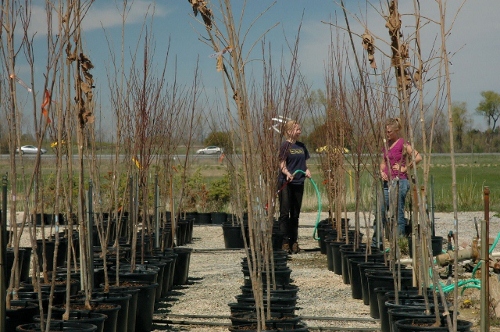
Will one study tell us everything we need to know about selecting street trees for a changing climate? Of course not. But it provides some important base line information and insights on approaching the problem. Trees in urban and community forests are already operating at the margins and subject to myriad of stresses. The argument can be made that urban ecosystems are among those most at risk under climate change. Trees are an important component of many climate change mitigation strategies but they must be able to survive and grow in order to contribute this function.
The study “Urban tree selection in a changing climate” is funded by Michigan State University Project GREEEN, with material and in-kind support from J. Frank Schmidt and Sons Nursery, Nursery Supplies, Inc., Renewed Earth, Inc., and the Greening of Detroit.



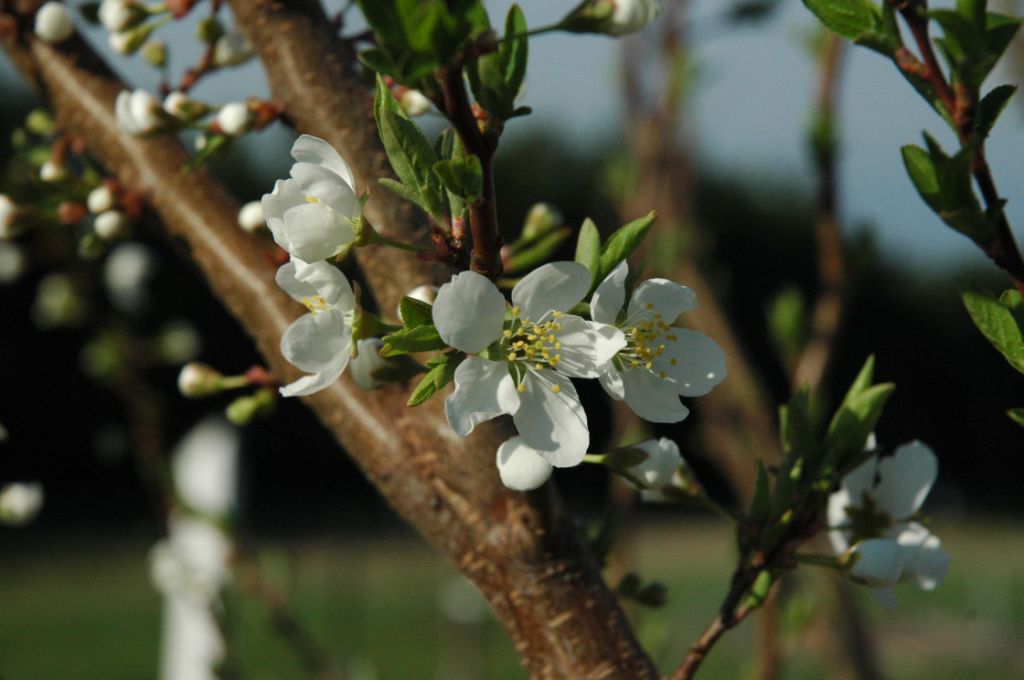
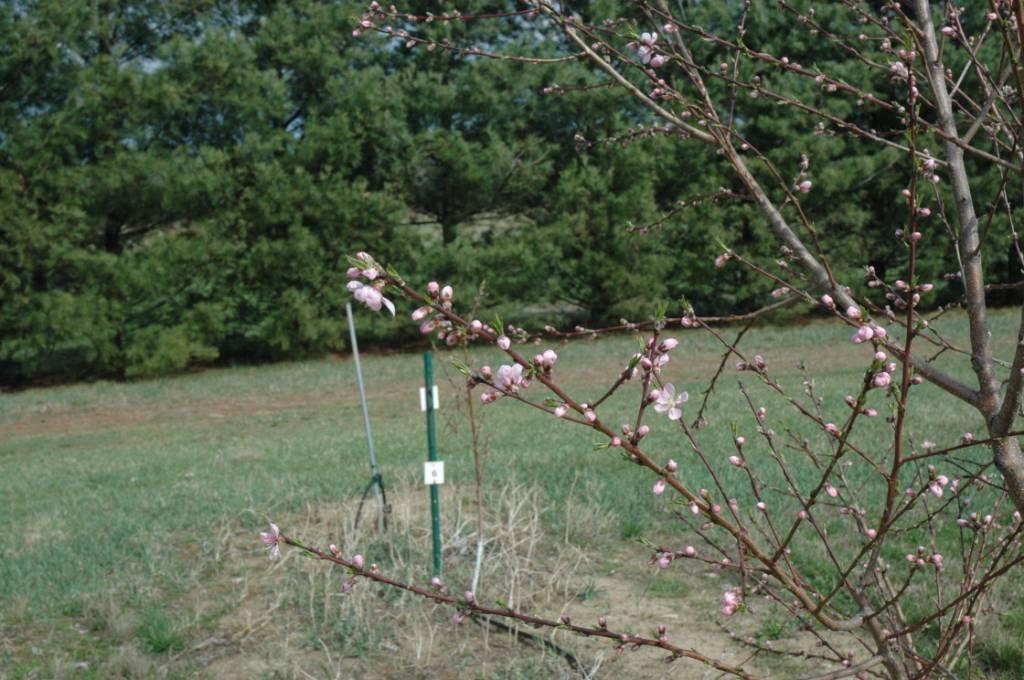

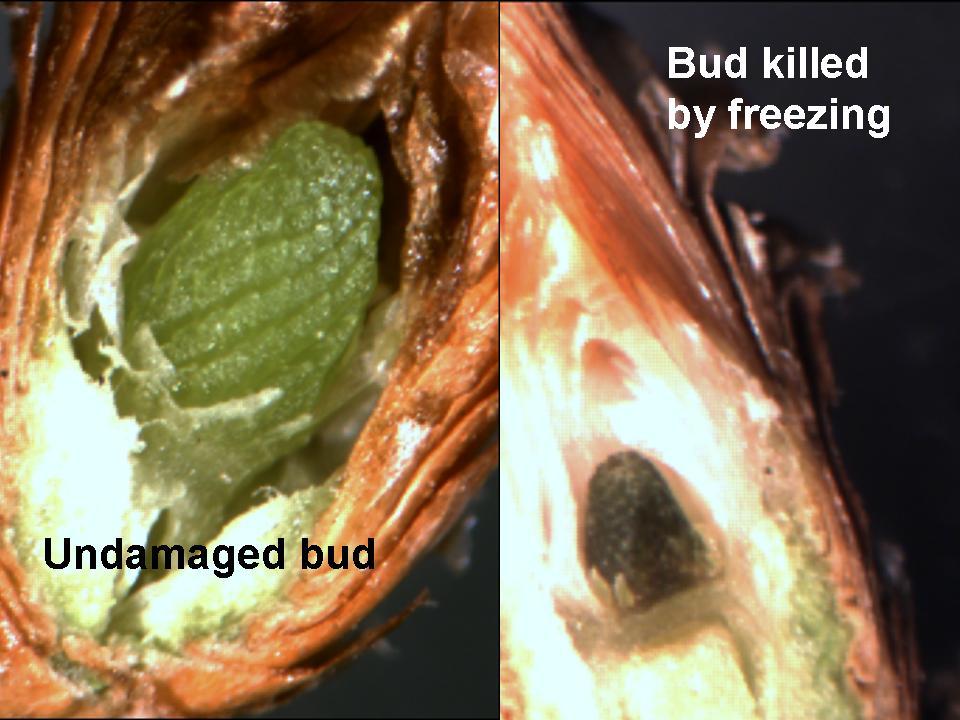
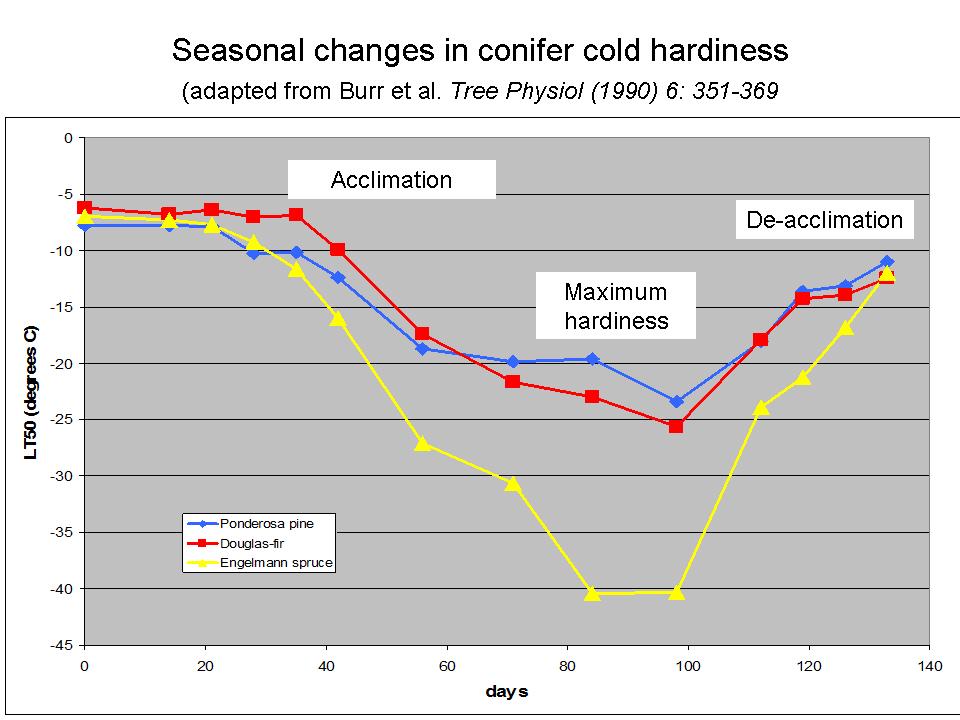 Seasonal trend in phases of cold hardiness: Acclimation, Maximum hardiness, and De-acclimation
Seasonal trend in phases of cold hardiness: Acclimation, Maximum hardiness, and De-acclimation